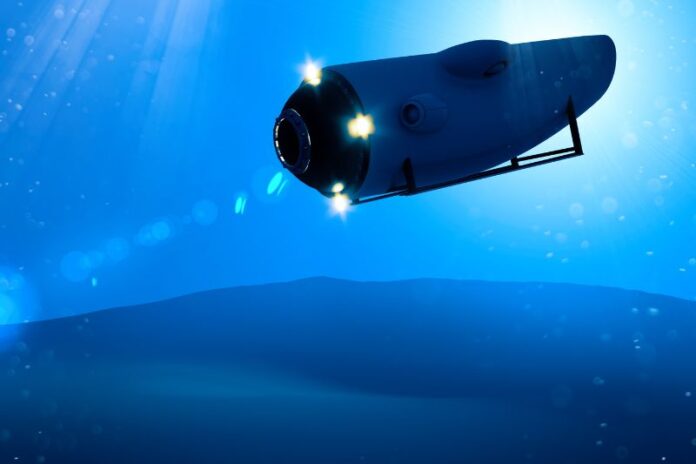ATHENS, GREECE — In the course of a single week, two tragedies unfolded, both exposing the stark, divergent responses by our media and governments based on the affected demographics and the narratives they spin. Intriguingly, both tragedies involved the ocean and rescue attempts, starkly underlining our inconsistent approaches to different crises.
One tragedy revolved around the implosion and subsequent deaths of five individuals who had invested $250,000 each for an underwater journey to explore the Titanic’s ruins. The other was a catastrophe at sea off the coast of Greece, resulting in the tragic assumed loss of nearly 700 migrants in pursuit of better lives overseas. Now, take a guess, which incident garnered more media attention? If your instinct was to go for the event that claimed up to 700 lives, you would be dead wrong.
On June 13, a distress signal from a migrant vessel carrying up to 750 individuals was first brought to light by Italian activist Nawal Soufi, prompting a range of rescue efforts from different parties throughout the day. Nonetheless, differing narratives surfaced concerning the vessel’s readiness to receive aid and its overall condition. Despite obtaining supplies from the Maltese-flagged tanker Lucky Sailor and from Greek authorities, the boat’s occupants reportedly declined any further assistance, staying their course. Adding to the confusion, Soufi and Greek parliament member Kriton Arsenis alleged that the Greek coast guard attempted to tug the boat toward Italian waters, a claim vehemently denied by Greek officials. Ultimately, the boat succumbed and capsized during the early hours of June 14, with further conflicting stories on whether it was a result of overcrowding and engine malfunction, or if it was because they were being tugged by a Greek coast guard.
Tragically, of the estimated 750 souls onboard, 104 have survived.
On June 18, an underwater submersible designed by OceanGate to plunge nearly 13,000 feet below sea level failed to reemerge as planned. According to the U.S. Coast Guard, barring any immediate catastrophic incident that would have already claimed the lives of the passengers, the vessel had approximately 96 hours of oxygen remaining. The ensuing rescue operation was nothing short of colossal, featuring multiple aircraft conducting continuous radar sweeps of the surface and complex remote vehicles tasked with scouring the Titanic’s wreckage. The world was on edge, watching and waiting in anticipation, fervently hoping for the survival of the submersible’s passengers. Regrettably, their hopes were in vain. The rescue efforts yielded no positive results. As it turns out, the reason why it never surfaced was because the submersible underwent a devastating implosion that, quicker than the passengers’ brains could register the event, killed all five people onboard.
On June 24, I arrived in Greece to venture to its various islands on a vessel with many close colleagues and friends on board. Witnessing what transpired over the past weeks has made everyone here wonder: What would have transpired if those migrants on the capsized boat had been a handful of Americans enjoying a yachting expedition instead?
What if they were us?
So, why the disparity in media coverage and rescue attempts? To answer that, we must first understand what we value in a story. Do we look for a compelling, easily digestible narrative, or a complex web of differing accounts and foregone conclusions?
Unquestionably, the OceanGate incident provides an enthralling and absorbing tale. It creates a sense of urgency, akin to a countdown in a show like “24,” reminding us that the story and the fate of those involved is unfolding in real time, as we carry on with our daily routines. Moreover, it’s a simple story — uncluttered and easily digestible. Five people are trapped in a submersible at the bottom of the ocean with just 96 hours of oxygen remaining. It’s as straightforward as that.
In contrast, the migrant story is considerably more intricate, teeming with conflicting accounts of the events, critical policy considerations, numerous parties involved, a story that is already at its end, and overall, a narrative that requires a significant investment of time to truly comprehend.
Despite the relative captivation of the OceanGate story compared to the migrant incident, we must still question why the actual rescue responses were so dramatically different. Yes, different government entities were involved, yet I fervently believe that authorities would have acted differently had the occupants of the vessel been different. Reading the account of what happened when Greek authorities initially made contact with the migrant boat, it remains baffling that, given the apparent overcrowding of the vessel, and the Greek authorities’ own admission that they believed the boat was on the verge of capsizing due to overcrowding, they still allowed it to continue on its perilous journey.
I have witnessed a consistent sentiment of outrage echoed from its people over the media and Greek coast guard’s handling of the tragedy. There is an outpouring of anger, a clamor for answers. The inherent value and equality of every single life is a principle that should never be overshadowed or forgotten. Yet, it seems that both our governments and the media have shamefully lost sight of this vital tenet; they value certain people over others, and captivating stories over what really matters.
































